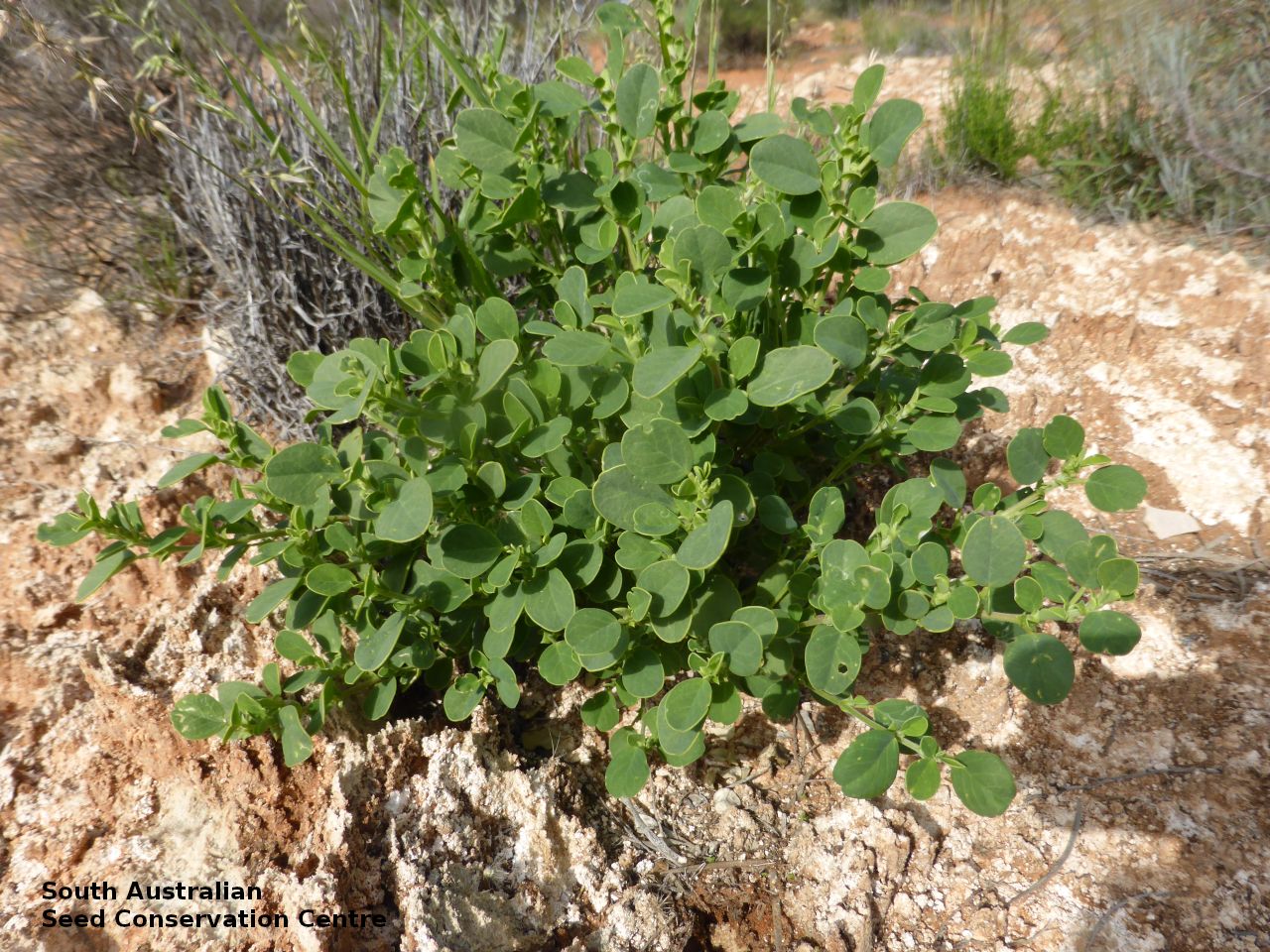
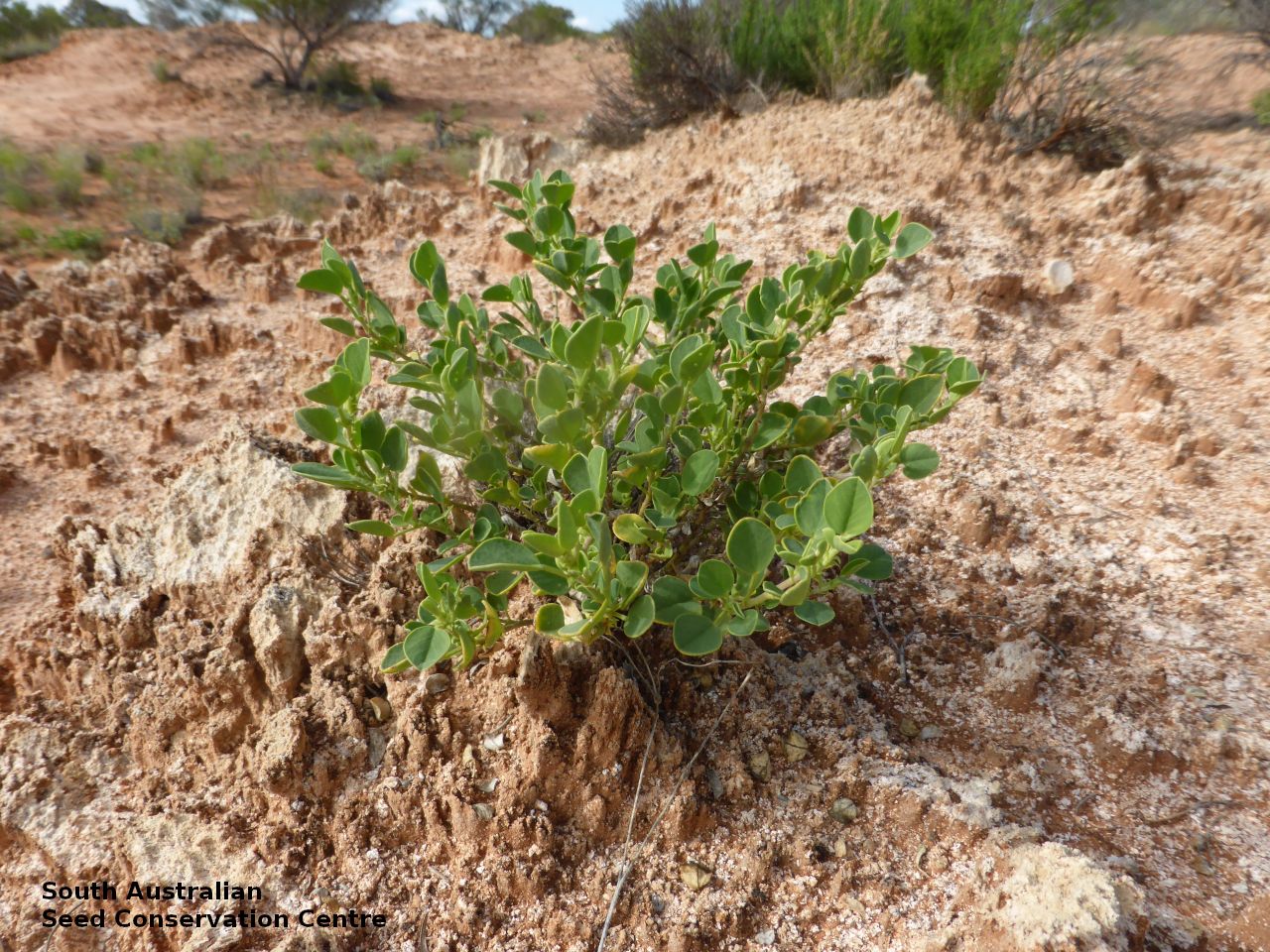
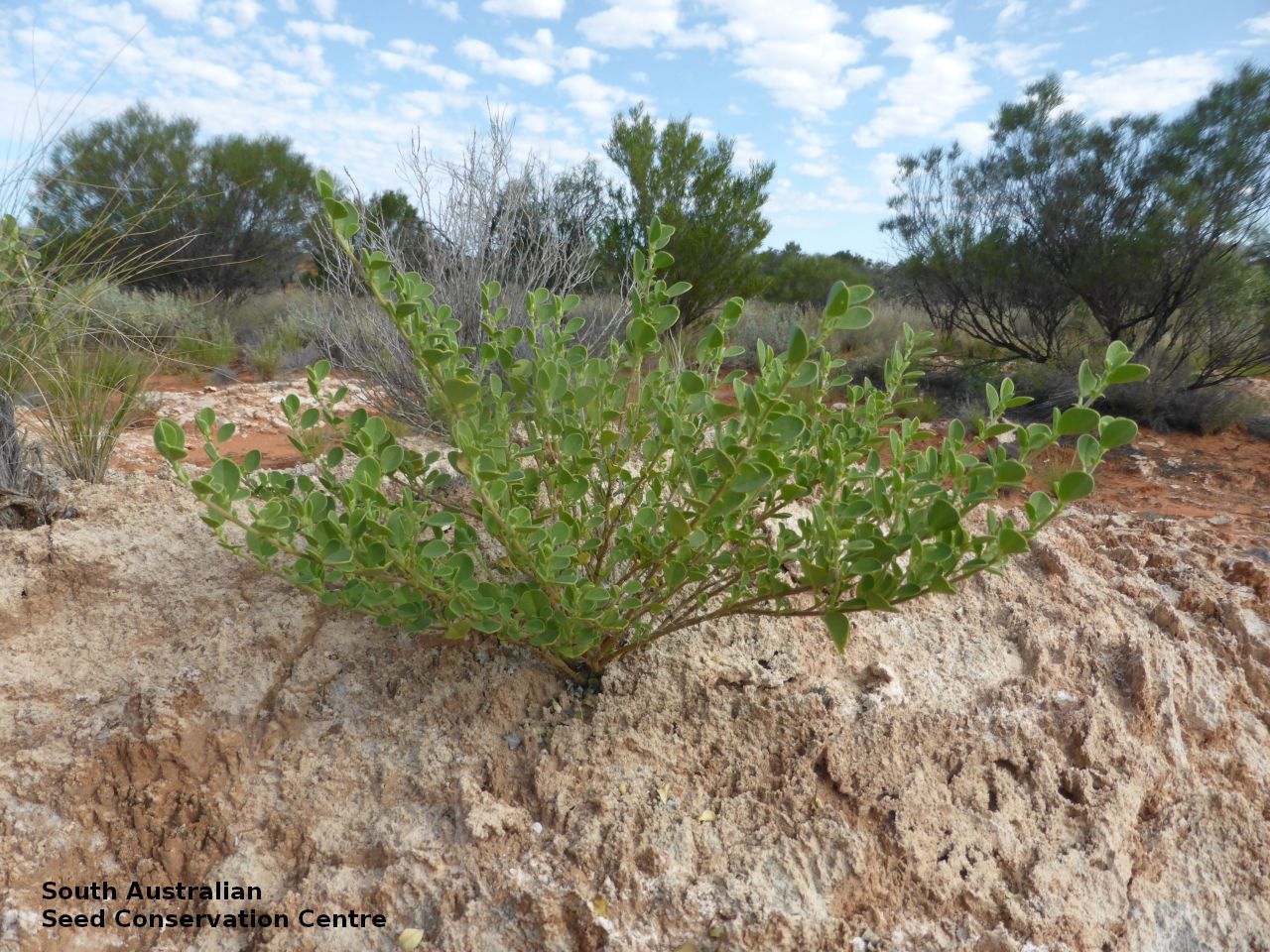
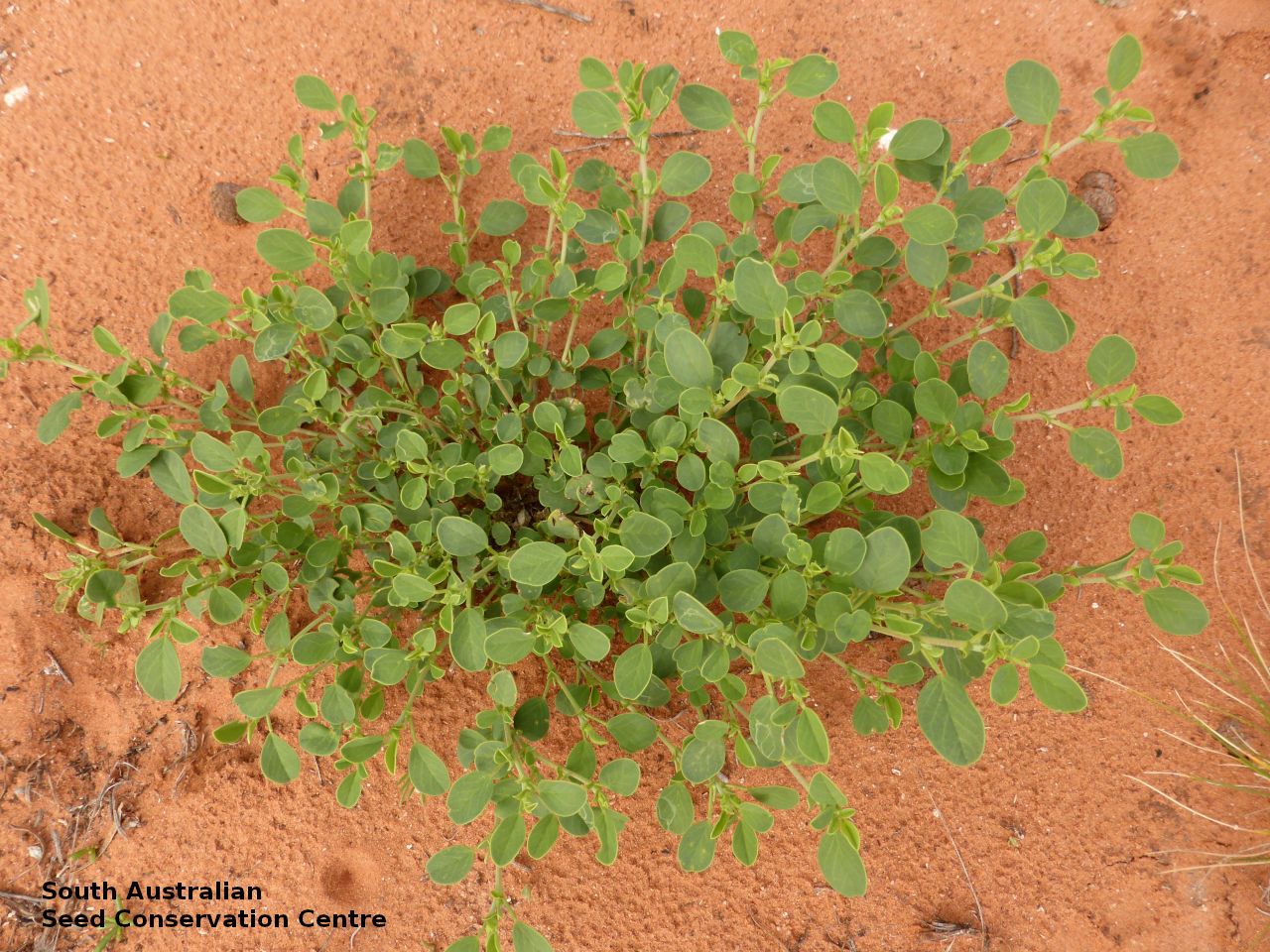
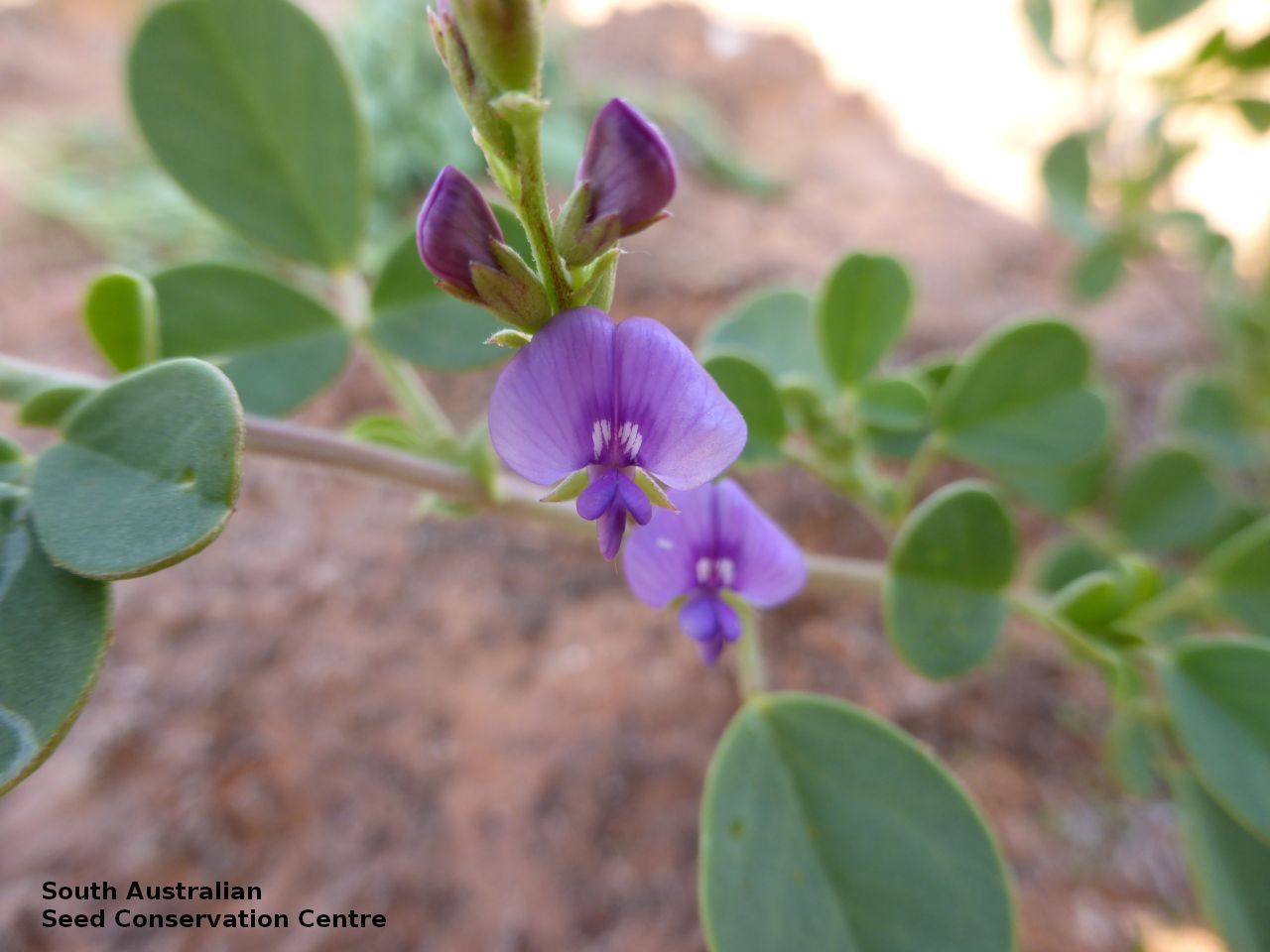
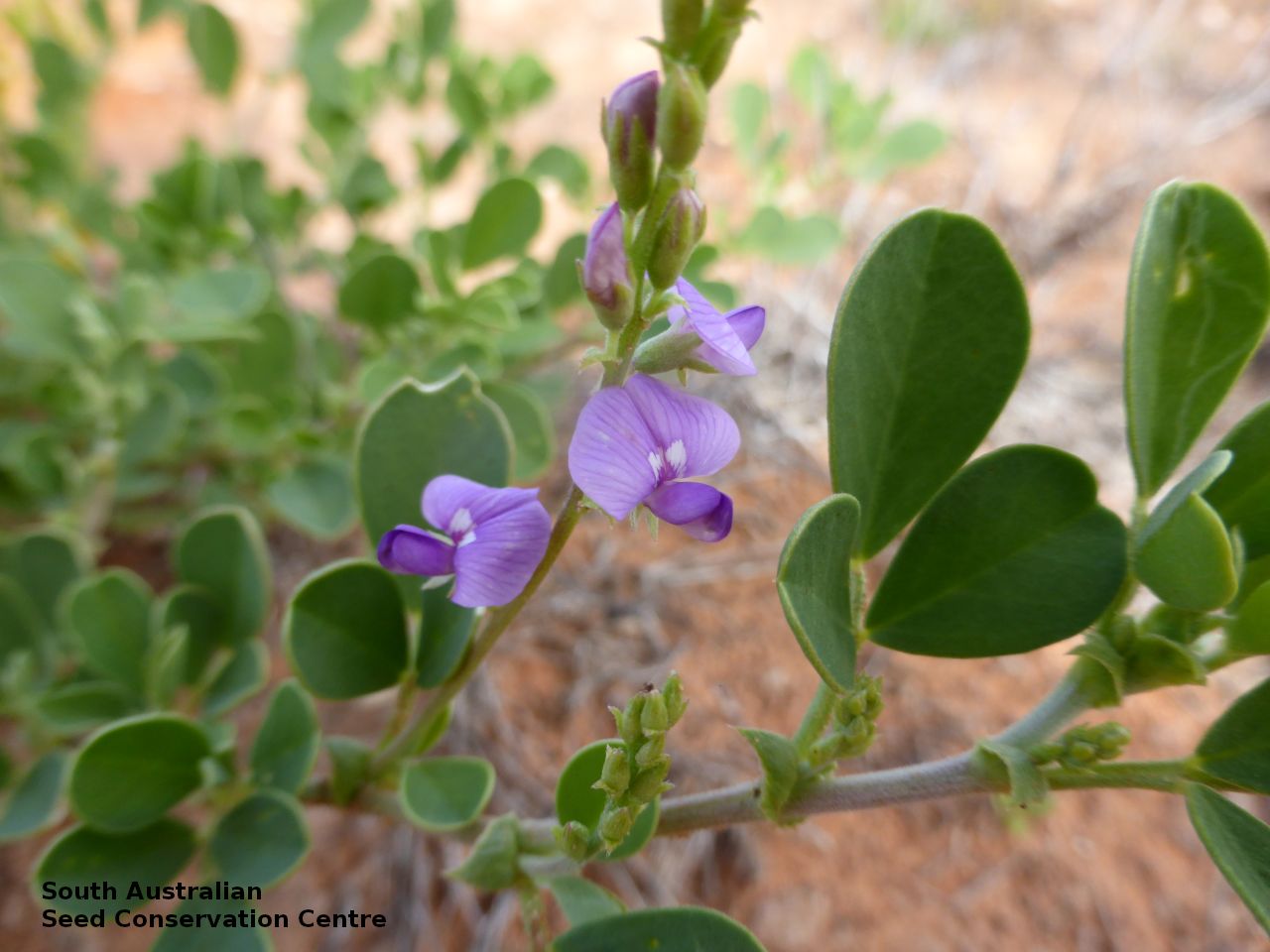
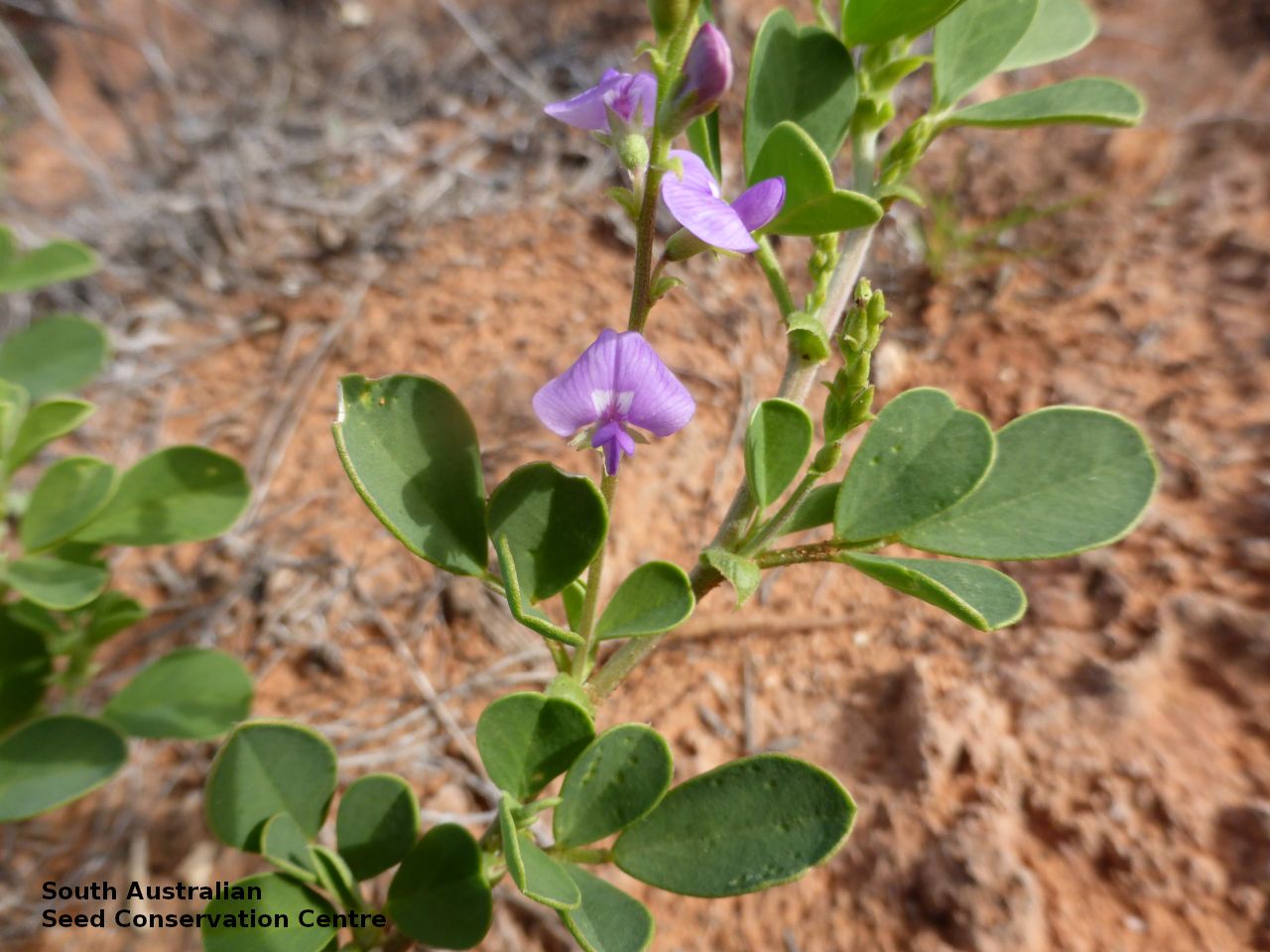
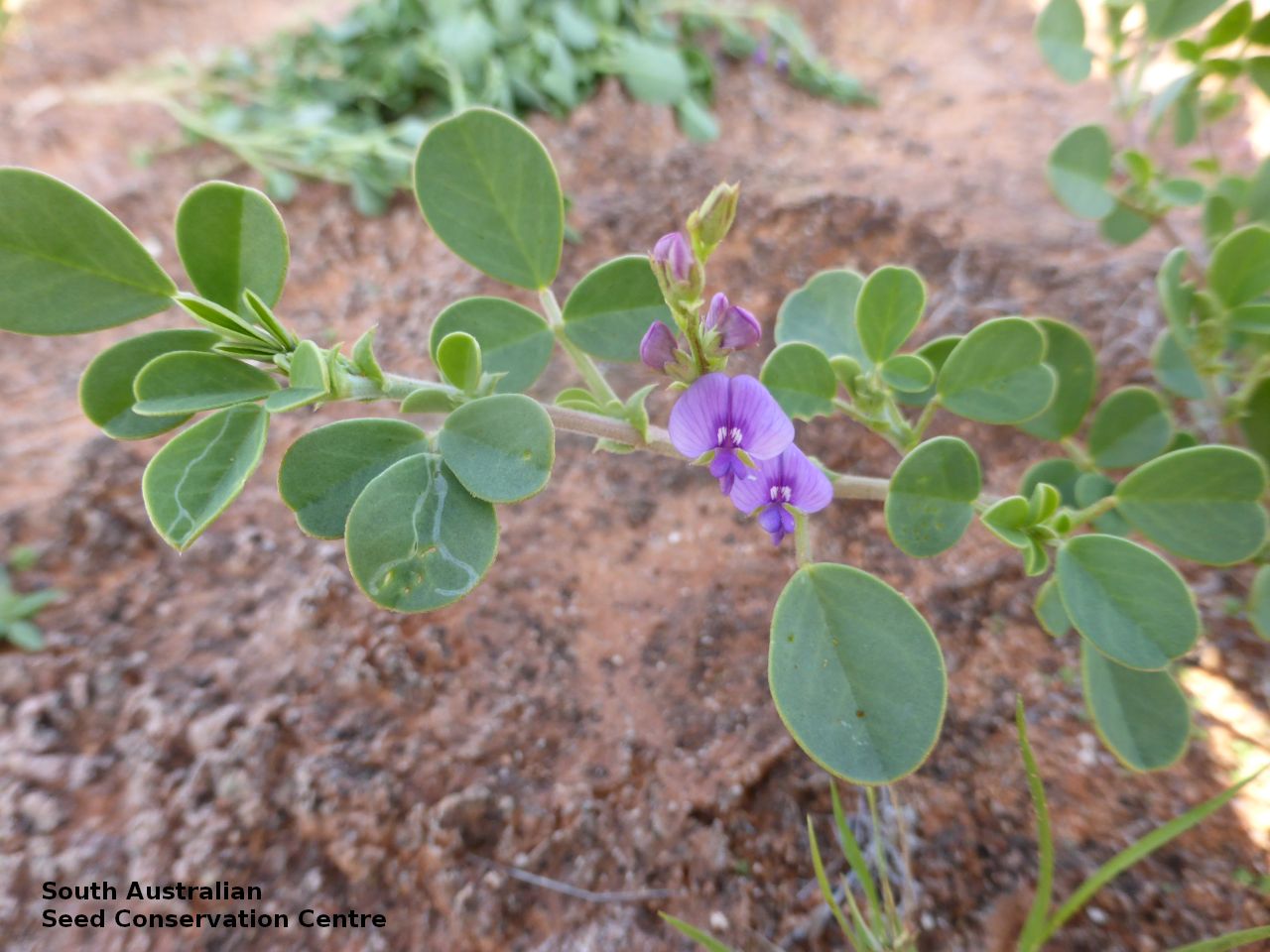
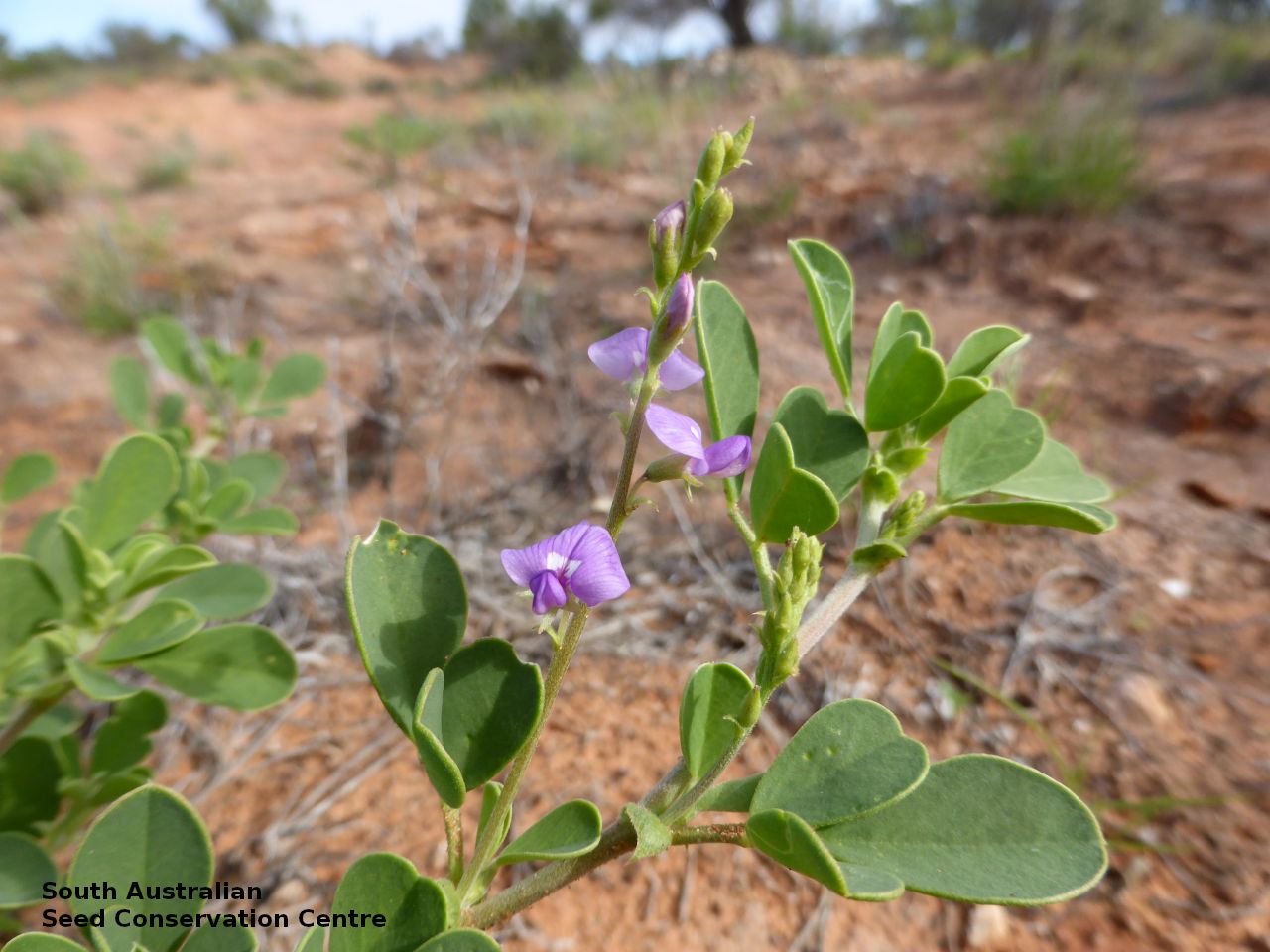
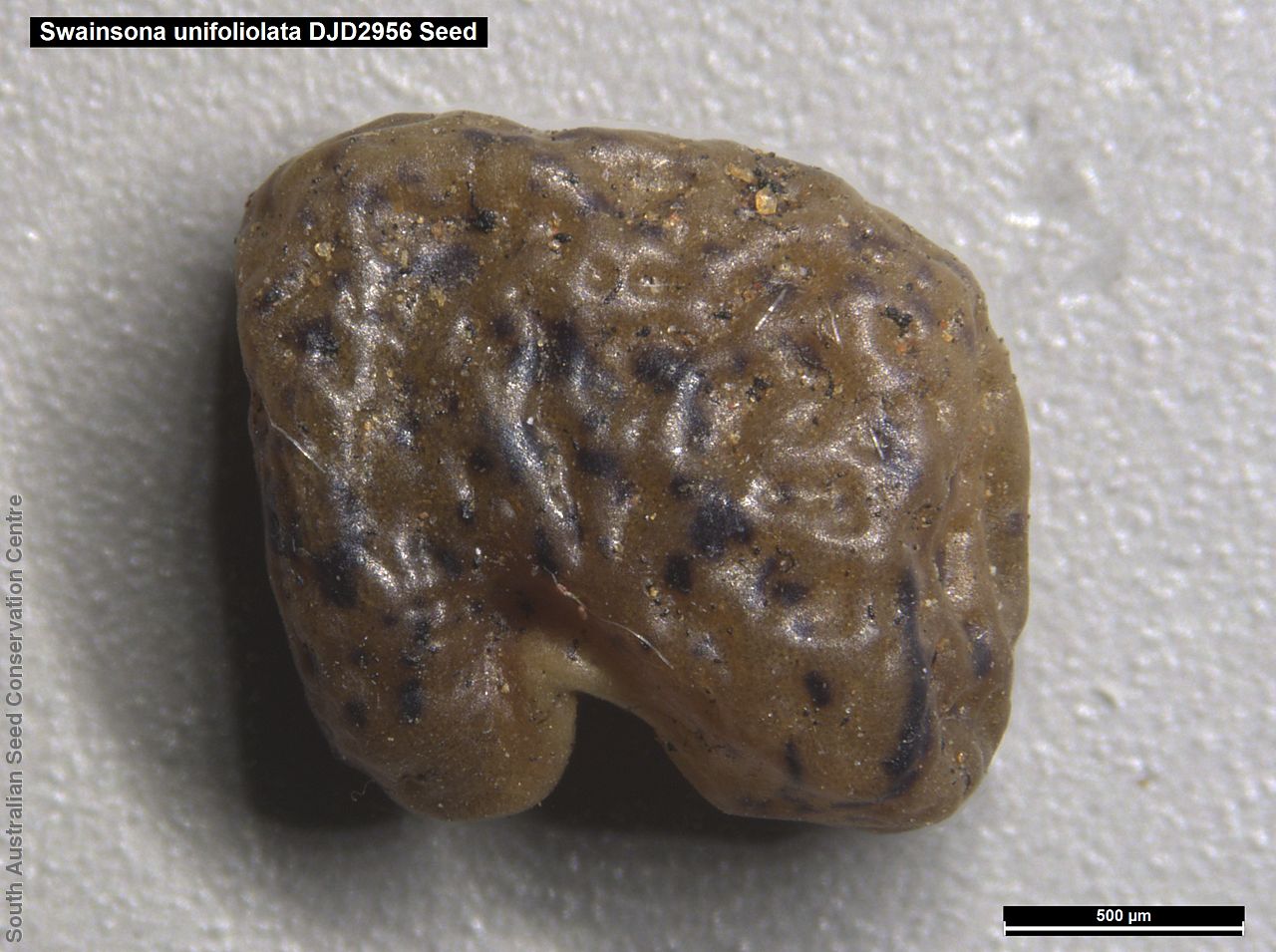
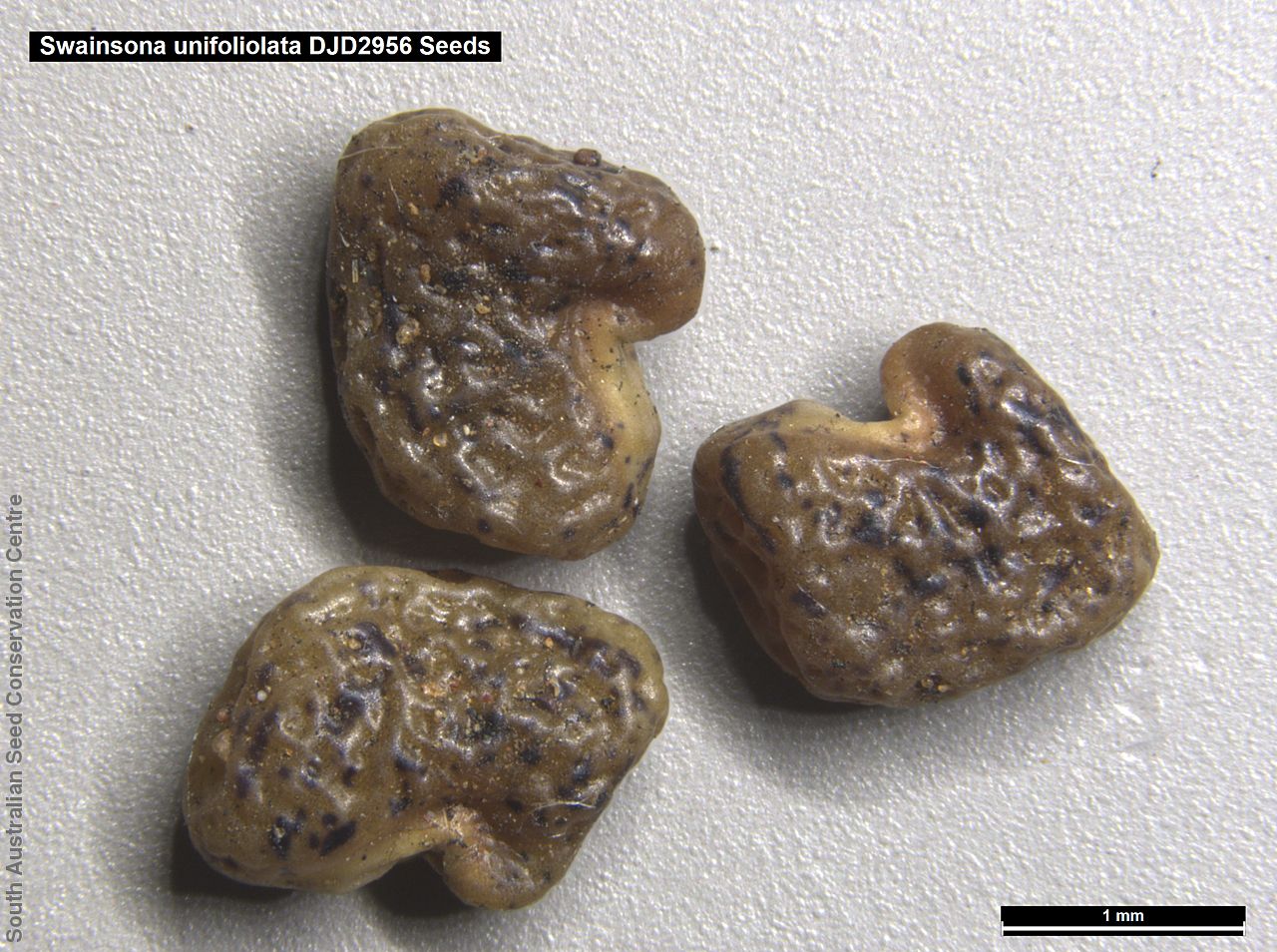
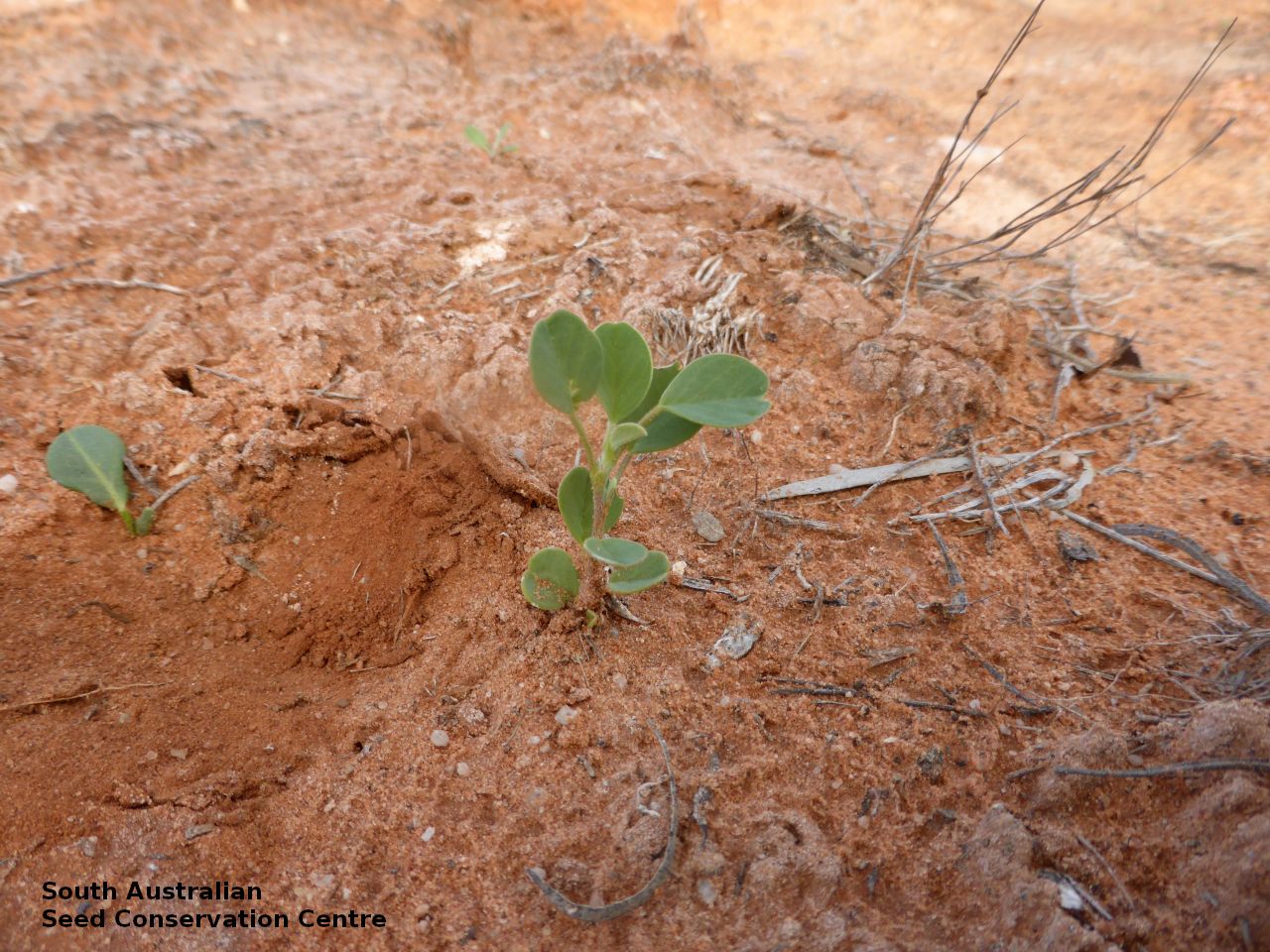

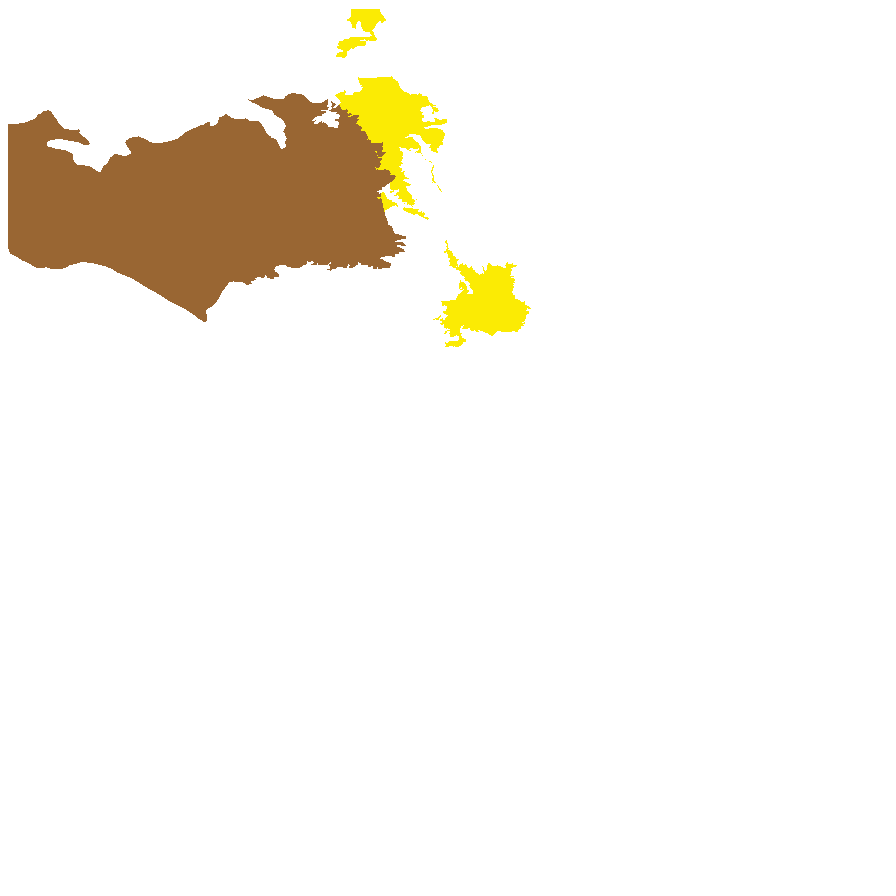
Etymology
Swainsona named after Isaac Swainson (1746-1812), an English scientist and horticulturalist who had a private botanic garden near London. Unifoliolata meaning with one-leaflet.
Distribution and status
Found scattered in a small area in the west central corner of South Australia on margins of salt lakes on gypsum and limestone. Also found in Western Australia and Northern territory. Native. Rare in South Australia. Common in the other states.
Herbarium region: North Western
NRM region: Alinytjara Wilurara
AVH map: SA distribution map (external link)
Plant description
An erect or ascending perennial herb to 30 cm high, with several branched stems from a taproot. Leaves to 7 cm long with one leaflet or occasionally 3 leaflets, with the unifoliolata leaves on the lower part of the branches, leaflets mostly obovate to 26 mm long and 15 mm wide and when more than one, the terminal much larger than the lateral. Flower raceme to 12 cm long of dissimilar age with purple pea-flowers. Flowering between August and September. Fruits are black, narrow elliptic, inflated and curved pod to 25 mm long and 4 mm wide. Seeds are brown mottled, semi-flat reniform seeds to 2 mm long and 1 mm wide with a wrinkled surface. Seed embryo type is bent.
Seed collection and propagation
Collect seeds between September and November. Collect mature pods, those that are drying off and contain hard seed. Mature pods can be found lying on the ground next to the plant. Place the pods in a tray and leave to dry for 1-2 weeks. Use a rubber bung to rub the pods or break the pods open with your fingers to dislodge the seeds. Use a sieve to separate the unwanted material. Store the seeds with a desiccant such as dried silica beads or dry rice, in an air tight container in a cool and dry place. From one collection, the seed viability was high, at 90%. This species has physical dormancy that needs to be overcome for the seed to germinate (e.g. nicking or softening the seed coat).
| Location | No. of seeds (weight grams) | Number of plants | Date collected | Collection number Collection location | Date stored | % Viability | Storage temperature |
|---|---|---|---|---|---|---|---|
| BGA MSB | 2,200 (3.31 g) 2,200 (3.31 g) | 30+ | 22-Sep-2014 | DJD2956 North Western | 1-Jan-2016 | 90% | -18°C |
Number of plants: This is the number of plants from which the seeds were collected.
Collection location: The Herbarium of South Australia's region name.
% Viability: Percentage of filled healthy seeds determined by a cut test or x-ray.